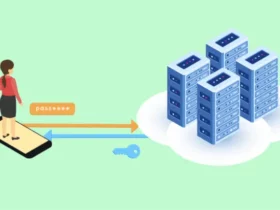Data center cooling technologies have seen dramatic changes over the years, reflecting the exponential growth in data processing demand and the relentless pursuit of energy efficiency. Early data centers relied on simplistic cooling methods, like conventional air conditioners, which were energy-intensive and often inadequate. As the volume of data processed surged, so did the need for more effective cooling solutions. This led to the development of innovative cooling systems, such as liquid cooling and free cooling technologies, designed to handle the massive heat loads generated by modern servers while minimizing energy consumption. This evolution of cooling technologies is a fascinating journey of innovation and adaptation, reflecting the broader trends in technology and sustainability.
Understanding the Purpose of Data Center Cooling
Data center professionals and researchers have relied heavily on online resources to stay updated on the latest advancements in cooling technologies. Websites, blogs, and forums provide valuable insights into the design, implementation, and management of data center cooling systems. These resources offer a wealth of information on various topics such as traditional and emerging cooling methods, design considerations, and best practices for optimizing cooling efficiency. They also serve as a platform for discussions and exchange of ideas among industry experts, driving continuous innovation in data center cooling.
On the other hand, online courses and certification programs have also become essential for individuals looking to build a career in data center cooling. These resources provide comprehensive knowledge of different cooling technologies and their applications, ensuring professionals stay updated with industry best practices.
The Rise of Liquid Cooling
Liquid cooling emerged as a revolutionary approach to handle escalating heat loads efficiently. Unlike traditional air-based cooling systems, liquid cooling directly targets high-heat-generating components such as processors, effectively dissipating heat and maintaining optimal operating temperatures. It employs a coolant that is circulated through specific parts of the server rack, absorbing the heat and transferring it away from sensitive components. While liquid cooling technology requires a more complex setup than conventional methods, its superior cooling capabilities and energy efficiency make it increasingly popular in modern high-density data centers.
Also, with advancements in cooling system design and materials, liquid cooling has become a much safer option for data centers, eliminating the risk of leaks or spills that were once a major concern. The rise of liquid cooling has also paved the way for more compact server designs, as it allows for denser packing of servers without compromising on performance.
The Advent of Immersion Cooling
Immersion cooling presents a cutting-edge development in data center cooling technology, further enhancing the efficiency and compactness provided by liquid cooling. This technology involves submerging servers in a dielectric coolant that absorbs and dissipates heat directly, significantly reducing the need for energy-intensive fans and air conditioning systems. Immersion cooling systems can handle much higher heat loads than traditional methods, making them ideal for next-generation, high-performance computing. As this technology continues to mature, it’s expected to play a significant role in the future of data center cooling, particularly in highly demanding environments where traditional cooling methods fall short.
In some cases, immersion cooling can eliminate the need for mechanical cooling systems, resulting in significant cost savings and energy efficiency. This has made it an increasingly attractive option for data center operators looking to reduce their environmental impact and operating costs.
The Impact of Artificial Intelligence on Data Center Cooling

Artificial Intelligence (AI) and Machine Learning (ML) are emerging as powerful tools in optimizing data center cooling systems. By processing and analyzing vast amounts of data from sensors throughout the data center, these technologies can predict thermal behaviors, identify inefficiencies, and autonomously adjust cooling parameters in real-time. This results in substantial energy savings, reduced operational costs, and improved sustainability. Companies like Google are already leveraging AI to enhance their data center cooling efficiency, underscoring the potential of these technologies to revolutionize the industry. AI and ML are not just shaping the future of data processing, but also the technologies needed to keep those processes cool. A lot of exciting developments are on the horizon for data center cooling, driven by the demand for more efficient and sustainable solutions. It is an ongoing journey of innovation and adaptation that will continue to push the boundaries of what is possible in data center cooling.
The Future of Data Center Cooling
As the demand for data processing continues to grow exponentially, the need for efficient cooling technologies will only increase. With advancements in renewable energy and green cooling solutions, the future of data center cooling looks promising. Innovative technologies like liquid immersion cooling, which completely submerges servers in non-conductive coolant, offer higher efficiency and lower energy consumption compared to traditional methods. Moreover, advancements in artificial intelligence and machine learning are also driving smarter and more efficient cooling systems that can monitor and adjust temperatures in real-time. The synergy between these technologies and the sustainability goals of data center operators will shape the future of data center cooling and ultimately pave the way for a more sustainable and efficient digital world.
The Role of Green Energy in Cooling Solutions

Renewable energy sources are playing an increasingly vital role in powering and cooling data centers as the industry embraces more sustainable practices. By harnessing the power of solar, wind, and geothermal energy, these environmentally friendly cooling solutions are not only reducing carbon footprints but also ensuring optimal operational efficiency. For instance, some data centers have implemented solar-powered cooling systems that convert solar energy into electricity to drive their cooling mechanisms. Similarly, geothermal cooling takes advantage of the earth’s natural heat-sinking properties to maintain ideal temperatures in data center facilities.
Edge Computing and Its Influence on Data Center Cooling
Edge computing, which involves the processing of data closer to its generation source, presents unique challenges and opportunities for data center cooling. On one hand, edge data centers tend to be smaller in size and are often located in harsh or unconventional environments, demanding robust and flexible cooling solutions. On the other hand, their smaller size enables the opportunity to experiment with innovative cooling strategies that would be too risky or impractical to implement in larger, centralized facilities. As edge computing continues to grow, it will undoubtedly influence the evolution of data center cooling technologies, encouraging further innovation and adaptability.
With relentless technological progress and an increasing emphasis on sustainability, the evolution of data center cooling technologies is far from over. The integration of Artificial Intelligence and Machine Learning is already transforming how cooling systems are managed, opening the door for autonomous and highly efficient operations. Developments such as liquid and immersion cooling have revolutionized the way we handle heat loads, offering increased efficiency and reduced energy consumption. Meanwhile, renewable energy sources and edge computing are driving the industry towards greener and more adaptable solutions. The future is ripe with promise and potential, and the journey of innovation and adaptation in data center cooling technology will continue to break new ground.













